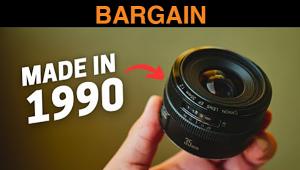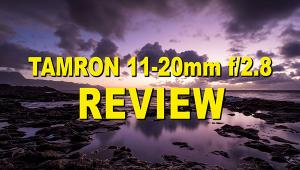Sigma’s Fisheye Duo; The Sigma 4.5mm f/2.8 EX DC HSM & 10mm f/2.8 EX DC HSM (Motor-In) Lenses
If you ever want a unique point of view try a "fisheye" lens. Like looking through a door peephole (which in fact is a "fisheye" type) this order of lens sacrifices linear correction in favor of a very wide angle of view. Originally made for creating "full sky" images when pointed straight up, they had long ago been adopted by photographers for creation of decidedly different points of view, and, today, even doing QuickTime movies to display the interior of a condo or vacation home.
|
City Scene
|
|
 |
|
|
The fisheye look is an acquired taste, albeit one that has an immediate seductive quality. While you can correct some of the inherent distortion using various programs, the point is not to create a "straight" image with a very wide angle of view but to enjoy the ride of this "beyond peripheral vision" optic. There are two types of fisheye: one rectilinear, with the standard rectangular frame and less angle of view, and the other hemispherical, the type featured in the new lenses from Sigma.
|
Close-Up & Foreshortening
|
|
 |
|
|
One of the truly amazing qualities of the fisheye is the almost ridiculous depth of field available at even modest apertures. As you know, one of the determinants of depth of field is the focal length of the lens, and when you use either a 10mm or 4.5mm focal length (with a minimum close focusing distance of 5.3" in both lenses) at even f/8 you get sharpness from 3 ft to infinity with ease. Add the amazing amount of foreshortening these lenses afford (the seeming enlargement of close subjects when focused close in relation to the distant background) and the picture possibilities are fairly mind-boggling.
|
Looking Up
|
|
 |
|
|
Rectangular Crop
|
|
 |
|
|
The 4.5mm f/2.8 lens (MSRP $1400, less in many outlets) is said by Sigma to be the first 180° circular fisheye made specifically for APS-C D-SLRs, and the HSM (motor built into the lens) opens this up for users of those cameras without built-in lens motors, such as the Nikon D40X used in this test. Yielding an 180° angle of view, the unit is fairly small (3x3.1") and lightweight (about 16 oz). Available in Canon, Nikon, and Sigma mounts, it's constructed of 13 elements in nine groups. Being of the DC variety, it utilizes SLD (Special Low Dispersion) glass and is super coated to minimize ghosting and flare.
- Log in or register to post comments

















































